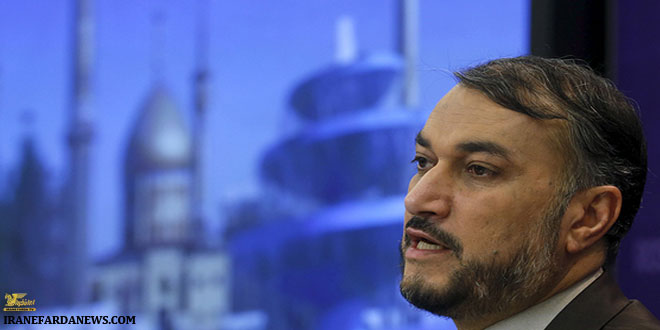
By” Arash Karami 20 January, 2016
When Iranian Foreign Minister Mohammad Javad Zarif traveled to Norway and Germany to meet European and American officials last week, many Iran observers were surprised to see Foreign Ministry spokesman Hossein Jaberi Ansari in photos of the meetings. Then, on June 19, it became clear why Ansari had been so visible when it was announced that Ansari had been appointed deputy foreign minister for Arab and African affairs.
Ansari succeeded Hossein Amir-Abdollahian, a well-known diplomat fluent in Arabic and English who had held the position since 2011. No reason was given for Ansari’s quick promotion — he had only been appointed spokesman in October.
Many conservative sites and newspapers appeared surprised by the sudden change.
Conservative Mashregh News wrote that Abdollahian is “the perfect example of a revolutionary diplomat” and that Iran needs more diplomats like him so that the country “is not taken for a ride at the negotiation table.” The glowing profile of Abdollahian questioned why he was removed when “for the first time diplomatic discussions on Syria and Yemen have become serious.”
The Mashregh article also said that regardless of the change, Iran would continue its “Islamic resistance.” The article was not critical of Ansari, writing that he “undoubtedly has capabilities worthy of respect, which he was shown previously.”
“Since the start of the Syrian crisis, Abdollahian had a key role in implementing Iran’s diplomacy in Syria and a number of times participated in negotiations to resolve the Syrian crisis in place of the foreign minister,” wrote Javan newspaper, which is linked to the Islamic Revolutionary Guard Corps. The paper warned that replacing him could have “different external signals.”
According to Javan, when the rumors of Abdollahian’s replacement first surfaced in April, a newspaper close to Lebanon’s March 14 movement, Mustaqbal, welcomed the news, saying that “it was a positive step in strengthening the relationship with Arab [countries].” The Javan article said that Ansari “is more inclined toward negotiations with the Syrian opposition,” and that before he had an official position within the Foreign Ministry, he had “implicitly criticized Iran’s approach in Syria.”
A statement by Basij university students published by Tasnim News Agency was by far the most critical of the reactions to Abdollahian’s removal. The statement said this was part of an effort to improve ties with Saudi Arabia, given Iran and Saudi Arabia’s regional rivalry and Abdollahian’s responsibilities in Iraq, Lebanon, Syria and Yemen.
The Basij statement also questioned why his removal was announced just three days after Zarif met with US Secretary of State John Kerry in Norway. The statement said that the removal would “weaken the resistance” and is designed to pave the way for “BARJAM 2,” meaning a landmark international deal in the vein of the comprehensive nuclear deal, which is known by the acronym “BARJAM” in Iran.
Fars News also believes there is a larger plan behind the change and viewed Abdollahian’s removal as a conciliatory gesture by the Hassan Rouhani government in order to improve ties with Arab countries in the Persian Gulf. Fars News reported that the move is linked to an unconfirmed confidential letter from Rouhani to the emir of Kuwait calling for talks in order to improve ties between Iran and its neighbors.
Adding another twist in the plot, Abdollahian was appointed as Iran’s ambassador to Oman, but was unable to accept the position due to “unexpected personal and family problems.” He will serve as adviser to Zarif instead. Bahram Qassemi will succeed Ansari as spokesman.
In other news, Iran’s Intelligence Ministry said that it had thwarted a bomb attack inside the country. It said the attacks were planned by “takfiri-Wahhabi terrorists,” which is a term usually used to describe Sunni extremist groups such as the Islamic State and al-Qaeda.
 khalijefars News, Blogs, Art and Community
khalijefars News, Blogs, Art and Community








